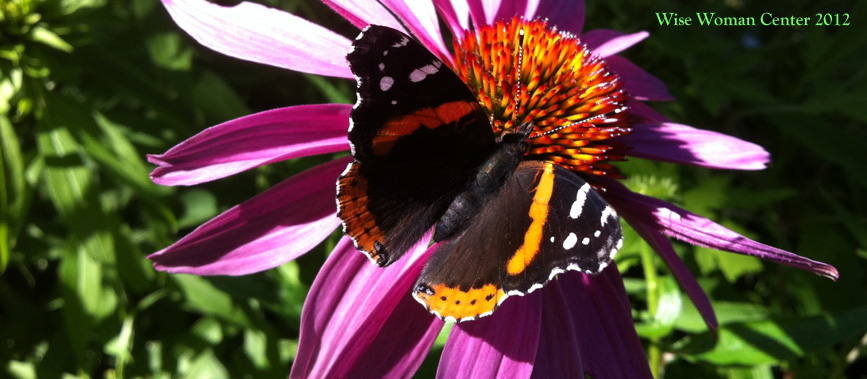Letís go to the Senecio swamp to see the field of forget-me-nots in bloom. Bring your field guides. Follow me. Hey! Goats! Do you want to go with us?
| 
|
Mayapple AKA American mandrake (Podophyllum peltatum)
On the way to the swamp, letís stop by the Mayapple patch. This emetic purgative is one of the most poisonous plants that grows in my forest. It is said to have been used by Native people to commit suicide. A concentrate from the roots is currently used in scientific medicine to burn off genital warts, sometime causing severe, even lethal, side effects. Contacting or consuming Mayapple during pregnancy is said to cause birth defects. Someone once made me a travel charm from a Mayapple: she made ritual with the plant, carefully dug the root that offered itself to her, dried it, wrapped it in red flannel, tied it with a colored string, and instructed me to put it in my suitcase to insure safe journeys. I did.
|
| 
|
Partridgeberry (Mitchella repens)
Just a little further, and we’ll be at the swamp. But stop here for a moment and sit. This lovely, shiny, evergreen, paired-leaf creeper rewards those who get down to her level with her exquisite flowers. Two flowers are joined at the base and, eventually, form one red berry (see previous weed walk for photo) with two little stars on it: the partridgeberry, checkerberry, deerberry, twinberry. Grandmother Twylah Nitsch told us it was disrespectful to call it “squawvine or squawberry.” According to her, “squaw” is Native American slang for the male member! The leaves, as a tea, assist the kidneys and bring deeper sleep; they are classically used as a tonic during the last weeks of pregnancy to insure an easy birth.
|
| 
|
Forget-me-not (Myosotis scorpioides)
Here we are, finally, at the Senecio swamp. If we walk this way, toward that open area under the power line, we will be greeted by a large patch of that blue-petaled, yellow-eyed, fairy: true forget-me-not. We can sit here, a little above the swamp, and enjoy the long view. But to get up close, we are going to take off our shoes, walk carefully through the spagnum moss patch (yes, we are sinking in up to our ankles). Then we will carefully step from grass hammock to grass hammock. And finally, because we want to get really intimate, squelch your toes into the cool mud where these delicate flowers grow and breathe her in. |
| 
|
American hellebore (Veratrum viride)
My private name for this stately perennial plant, which grows only in this one spot in the Senecio swamp, is “The Green Truth.” All parts of the plant, but especially the root, are poisonous, causing disruption to the heart rhythm. It has been used, sometimes with fatal results, as a narcotic. One day the goats decided to eat it. Freaked me out! I ran around screaming and pulling them off it, but they outnumbered me, so they all ate some before I spooked them enough to drive them away. They were sick (yes, it is emetic), sick (glassy-eyed), sick. . . but they survived it. Now, when they go near it, they snort and warn the young goats away.
|





